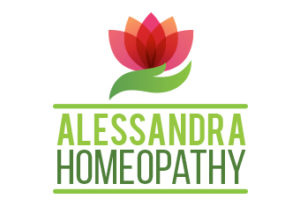Homeopathy is most often described as an alternative form of medicine, being an alternative to conventional medicine as practiced in the developed world.
But the International Academy of Classical Homeopathy (IACH) describes homeopathy as a therapeutic system. Homeopathy was created in 1796 by Samuel Hahnemann. The system is based on his doctrine of like cures like (similia similibus curentur), a claim that a substance that causes the symptoms of a disease in healthy people would cure similar symptoms in sick people.
The word ‘homeopathy’ is a combination the Greek words ‘omoios’, meaning ‘similar’, and ‘pathos’, meaning disease.
But how did Samuel Hahnemann arrive at his insight that the secret for the cure for a particular disease lies in the use of pharmaceutical substances that, when administered to a healthy person, will produce symptoms typical to the disease in question?
To answer this question, we must look at Hahnemann’s education. He was not only qualified as a medical doctor, he was also a polyglot – he was proficient in several languages including English, French, Italian, Greek and Latin. At various times in his life, he made a living as a translator and teacher of languages and eventually became proficient an Arabic, Syriac, Chaldaic and Hebrew as well.
It’s in his capacity as a translator of ancient medical texts that he came across some salient information that would determine his life’s work and gift the world the healing system of homeopathy.
While translating William Cullen’s A Treatise on the Materia Medica, Hahnemann encountered the claim that cinchona, the bark of a Peruvian tree, was effective in treating malaria because of its astringency. This discovery piqued his interest and he set about investigating it. He researched cinchona’s effect on the human body by taking it himself.
When the drug induced malaria-like symptoms in himself, he concluded that it would do so in any healthy individual.
And that was how he came to his healing principle of like cures like, in Latin: ‘simila similibus curentur’.
Conventional medicine and homeopathy have been at odds with each other since the beginning.
Practitioners of conventional medicine look for the cause of disease and fights that. Homeopathy, on the other hand, believes that the cure lies in strengthening the organism’s defense mechanism in order to be able to fight the imbalance.
Verifying the remedies
In order to verify the therapeutic validity the of the pharmaceutical substances to be used as remedies, Hahnemann carried out tests or “provings” of the remedies on healthy persons of both sexes by increasing the dosages, though not beyond the toxic levels.
In 1805 he published a collection of 27 drug “provings” in Latin.
Eventually he published a comprehensive list of ‘remedy symptoms’ which together with the toxicological symptoms of various substances, discovered from existing medical writings formed the ‘Materia Medica’ (medical material/substance).
The Materia Medica forms the backbone of the homeopathic pharmacology and acts like an encyclopedia of the therapeutic properties of each drug.
In 1810 Hahnemann published a complete account of his theories for the first time in his book Organon of the Art of Healing. The book contains 294 expressions of truth or aphorisms, which formed the framework for the laws of his medical system. The work was repeatedly revised by Hahnemann and published in six editions, the name changed from the second onwards to Organon of Medicine (Organon der Heilkunst).
His Materia Medica Pura, a compilation of “homoeopathic proving” appeared in six volumes between 1811 and 1827. The book contained the original tests “provings” Dr Hahnemann conducted on himself and his patients.
In 1828 he published Chronic Diseases in which he maintained that all chronic diseases are a result of the suppression of skin diseases or syphilis or gonorrhea. That is to say that if these three categories of diseases are treated wrongly, they remain within the organism in a suppressed state, in a changed form and finally they reappear as various kinds of chronic diseases.
On the basis of the law of similars and pharmacological provings on healthy individuals, Hahnemann developed a completely new medical system.
Sources:
https://www.vithoulkas.com/content/about-homeopathy
https://en.wikipedia.org/wiki/List_of_Latin_phrases_(S)#similia_similibus_curentur
https://en.wikipedia.org/wiki/Samuel_Hahnemann
https://heilkunst.com/biography.html
https://en.wikipedia.org/wiki/The_Organon_of_the_Healing_Art


